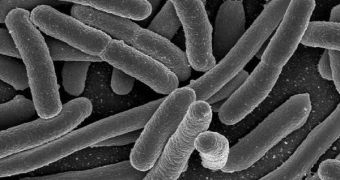A team of faculty members and undergraduate students from two universities in the United States has recently demonstrated clearly that computing within living bacterial cells is a distinct possibility, and, moreover, has managed to prove the concept in real-life. The “bacterial computers” showed the remarkable ability of being able to resolve highly complex mathematical problems, the four faculty members and 15 undergraduate students reveal. Details of the breakthrough were published in the latest issue of the Journal of Biological Engineering, a publication of BioMed Central.
“Our research contributed more than 60 parts to the Registry of Standard Biological Parts, which are available for use by the larger synthetic biology community, including the newly split red fluorescent protein and green fluorescent protein genes. The research provides yet another example of how powerful and dynamic synthetic biology can be. We used synthetic biology to solve mathematical problems; others find applications in medicine, energy and the environment. Synthetic biology has great potential in the real world,” Missouri Western State University graduate Jordan Baumgardner, who has been the first author of the new study, explains.
The research was conducted by experts at the MWSU and Davidson College biology and mathematics departments. They used the common Escherichia coli (E. coli) bacterial strain for the investigations, and managed to engineer it in such a manner that the new “computers” grew able to solve the complex Hamiltonian Path Problem, which is a classical test in mathematics. Essentially, the problem asks the solver to move through a network of nodes in such a manner that it passes through each of them exactly only once.
The bacteria were genetically engineered to find their ways in a three-node graph, and to shine with various pigments once they had finished navigating. Those that managed to complete the task fluoresced both red and green, with the end-result being yellow colonies. “We have found synthetic biology to be an excellent way to engage students in research that connects biology and mathematics. Our students learn firsthand the value of crossing traditional disciplinary lines,” MWSU expert Dr. Todd Eckdahl, the corresponding author of the paper, explains.

 14 DAY TRIAL //
14 DAY TRIAL //